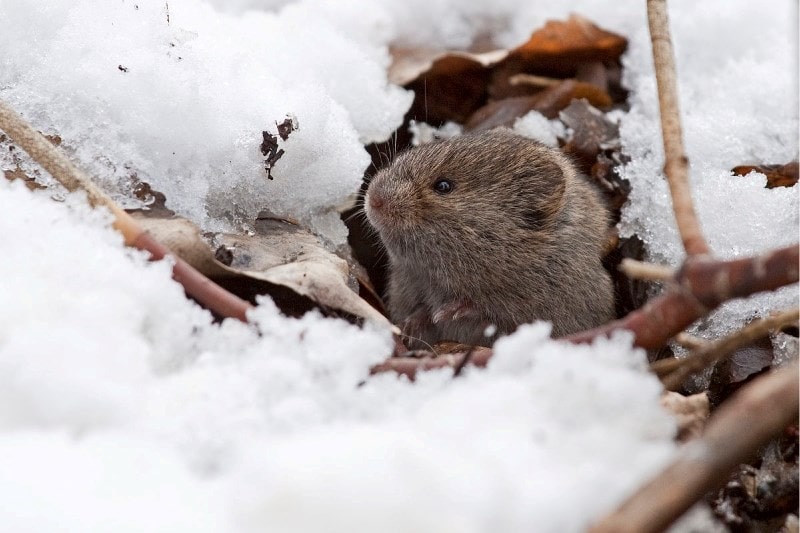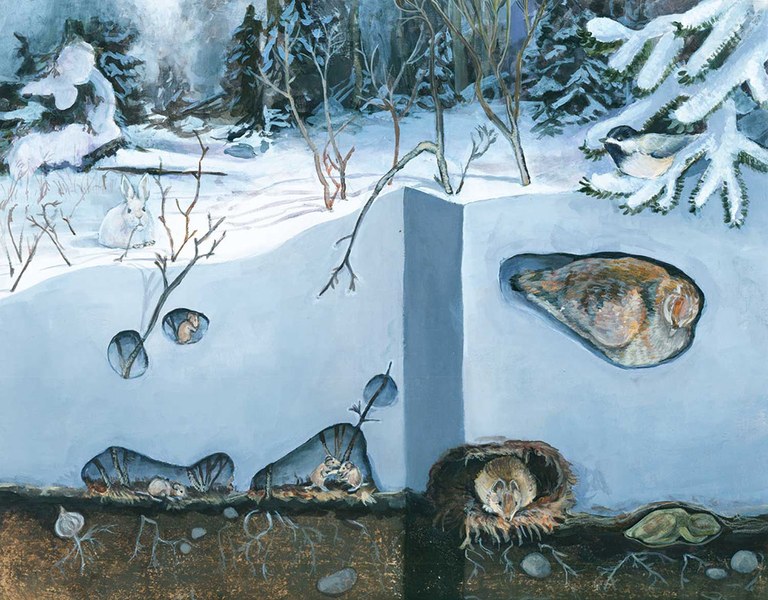
The cold and snowy months of winter force trees to drop their leaves, animals to seek hibernation, and humans to escape the outdoors. The harsh conditions that inevitably shift ecosystems create a deceivingly inactive environment. However, while the rest of the world is quiet, an exclusive ecosystem bustles beneath the snow.
For many species, snow presents scarce food and challenging habitat alterations. However, life underneath the snow thrives and relies on the cold, fluffy substance. A microhabitat, comprised of voles and ground squirrels, survives the winter months living in the subnivean zone. This area consists of endless tunnels and chambers, acting as a resource for travel, food, and sleep for these animals.

The subnivean zone refers to the space between fallen snow and the ground. It is created when the ground warms the snow closest to the surface, forming water vapor. The vapor then rises and forms ice crystals on the lowest layer of the snowpack. This layer acts as a roof, providing insulation and regulated temperatures. Therefore, even when the outside temperature is below freezing, plants and animals can stay warmer by living below the snow.
Eager to learn more, ecologists have been doing extensive research into the secret world below the snow. This fragile ecosystem only forms beneath snowfall at least six inches deep, which means careful and tactful study. Treading lightly as to not disturb, a new approach has recently been developed. Tubes are strategically placed in the ground during the warmer months and between temperature readers, as well as cameras, researchers can spy on the activity and behavior.